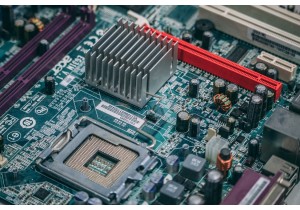The Q (Quality) factor of an inductor is a critical metric in electronics, directly affecting power efficiency, signal clarity, and heat generation in circuits. With industries like 5G, IoT, and electric vehicles demanding higher performance from smaller components, understanding Q factor is essential. This article breaks down its role, industry trends, and practical tips for optimizing circuit designs.
What Is Inductor Q Factor?
The Q factor measures how efficiently an inductor stores energy versus losing it as heat. It’s calculated as:
Q = Inductive Reactance (XL) / Resistance (R)
-
XL: How strongly the inductor resists changes in current (like a shock absorber for electrical flow).
-
R: Energy lost as heat due to wire resistance.
High Q means minimal energy loss. Example: A wireless charger with a high-Q inductor charges phones faster and stays cooler.
Low Q implies more heat and inefficiency. Example: Cheap LED bulbs may use low-Q inductors, causing flicker or shorter lifespans.
Industry Trends Driving Q Factor Demand
-
5G and High-Frequency Circuits
5G base stations operate at ultra-high frequencies (mmWave). Inductors with high Q minimize signal loss, ensuring clearer calls and faster data. -
Miniaturization in IoT Devices
Wearables like fitness trackers need tiny inductors. High-Q SMD (surface-mount) inductors save space while maintaining efficiency. -
Electric Vehicles (EVs)
EV power converters require inductors with high Q to reduce heat in compact designs, extending battery range. -
GaN (Gallium Nitride) Technology
GaN chips enable faster switching in chargers and adapters. High-Q inductors match these speeds, reducing energy waste.
Product Advantages: Why Q Factor Matters
-
Power Efficiency
High-Q inductors in smartphones improve battery life by wasting less energy. Example: A 10% efficiency gain means 30 extra minutes of screen time. -
Signal Integrity
Wi-Fi routers use high-Q inductors to reduce noise, preventing dropped video calls or laggy gaming. -
Thermal Management
Low-Q inductors in laptops cause overheating, triggering throttling. High-Q versions keep devices cooler and faster. -
Cost vs. Performance
Automotive systems balance Q and cost. Example: Infotainment systems may use mid-Q inductors, while safety-critical sensors need high-Q.
Q Factor’s Impact on Circuit Performance
-
Resonant Circuits (Radios, Filters)
High Q sharpens frequency selectivity. Example: Car radios with high-Q inductors better separate adjacent stations. -
Power Supplies
Low-Q inductors in phone chargers waste energy as heat, risking slower charging or damage. -
RFID and NFC
High-Q inductors extend the read range of contactless payment terminals. -
Oscillators (Clocks, Sensors)
High Q ensures stable timing in smartwatches, preventing erratic step counts or laggy notifications.
Network Information Integration: Real-World Examples
-
Smart Home Systems
High-Q inductors in smart hubs reduce interference between devices. Example: A thermostat won’t disconnect when a smart plug cycles. -
Data Centers
Server power supplies use high-Q inductors to maintain uptime. Low-Q parts risk overheating and data loss. -
Industrial IoT
Sensors in factories rely on high-Q inductors for accurate data transmission over long distances.
Choosing the Right Q Factor: 4 Key Considerations
-
Operating Frequency
High-frequency circuits (5G, RF) need higher Q. Low-frequency apps (LED drivers) can use lower Q. -
Size Constraints
Tiny inductors (e.g., hearing aids) prioritize Q to avoid efficiency loss in cramped spaces. -
Cost Limits
Budget devices may accept lower Q but risk shorter lifespans or user complaints. -
Material Choices
-
Ferrite cores: High Q at high frequencies (good for RF).
-
Air cores: No core loss but larger size (used in high-power transmitters).
-
Common Mistakes to Avoid
-
Ignoring Frequency Dependence
Q varies with frequency. An inductor ideal for 1 MHz may perform poorly at 100 MHz. -
Overlooking DC Bias
High current can saturate the core, dropping Q. Example: Drone motors may overheat if inductors can’t handle peak loads. -
Mismatching Core Material
Using powdered iron (low cost) instead of ferrite in high-frequency designs leads to excess heat.
Future Outlook: Innovations in Q Factor Optimization
-
Composite Core Materials
Mixing ferrite with polymers balances Q, size, and cost for consumer electronics. -
3D-Printed Inductors
Custom shapes improve Q by optimizing magnetic flux paths. -
AI-Driven Design
Algorithms simulate Q performance across frequencies, speeding up R&D for 6G and beyond.
FAQs: Inductor Q Factor Simplified
Q: Does higher Q always mean better performance?
A: Not always. For low-frequency apps, high Q may be unnecessary and increase cost.
Q: Can I measure Q factor with a multimeter?
A: No. Use an LCR meter or network analyzer for accurate readings.
Q: How does temperature affect Q?
A: Heat increases wire resistance (R), lowering Q. High-Q inductors often include thermal management features.
Final Recommendation
Prioritize high-Q inductors for high-frequency, efficiency-critical apps (5G, EVs, premium wearables). Use mid-to-low Q for cost-sensitive, low-frequency designs (appliances, basic power supplies). Always validate with real-world testing under expected operating conditions.
By aligning Q factor with application needs, engineers can optimize performance, reduce costs, and stay ahead in fast-evolving industries.

